We will continue our Day 10 adventures in Heidelberg starting with a look at, what else, a Cathedral. This is The Church of the Holy Spirit it is the most famous church in Heidelberg. It stands in the middle of the market place in the old center of Heidelberg not far from the funicular to the Heidelberg castle. The steeple of the church, rising above the roofs, dominates the town.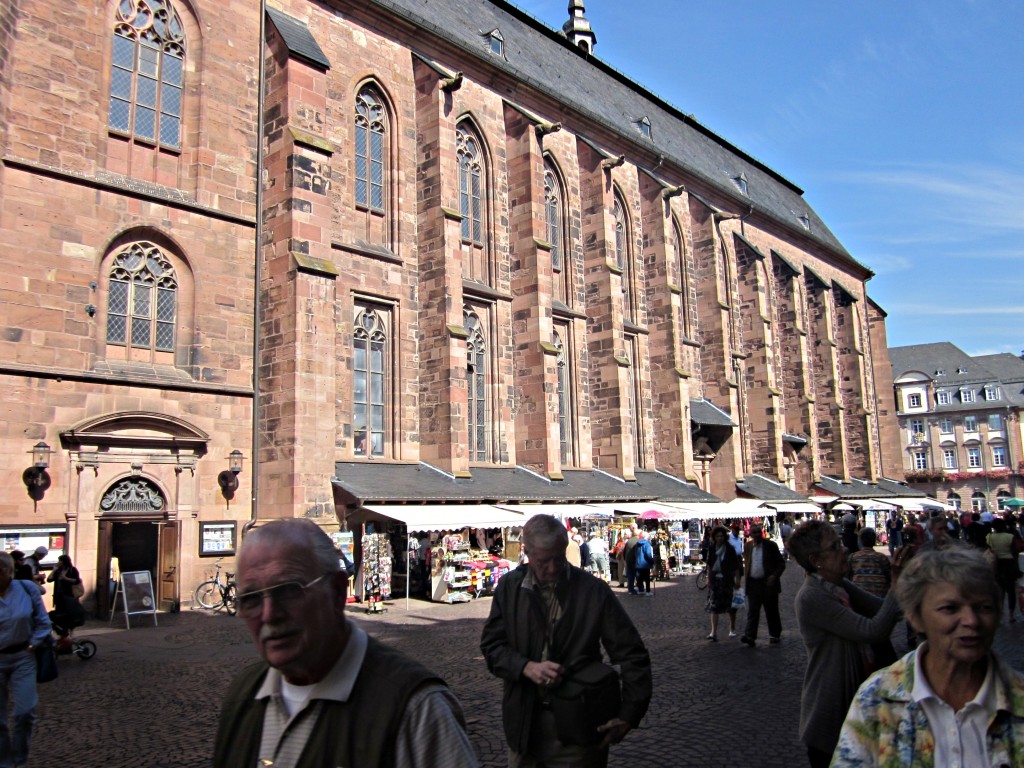 In 1398, the foundations of the current late Gothic church were laid on the site of a late Romanesque basilica which, in turn, had been erected in the place of even an older church. Thus the current church is the third sacred building on the site.
In 1398, the foundations of the current late Gothic church were laid on the site of a late Romanesque basilica which, in turn, had been erected in the place of even an older church. Thus the current church is the third sacred building on the site.
Here is a view of the Cathedral Apse and a fountain with a statue of Hercules on a column, built between 1703 and 1706, A great meeting spot.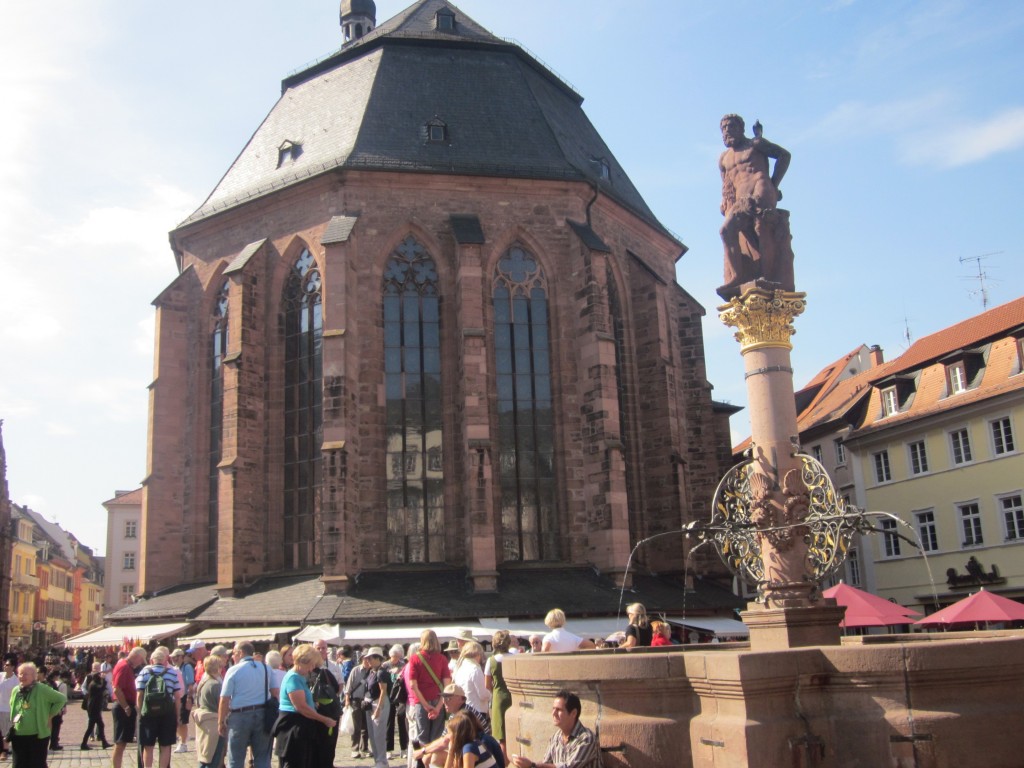 Note all the little roofs all around the base of the Cathedral. These are shops selling everything from post cards to tee shirts. Their back wall is part of the church. They actually pre-date the building of the cathedral and have been “grandfathered”.
Note all the little roofs all around the base of the Cathedral. These are shops selling everything from post cards to tee shirts. Their back wall is part of the church. They actually pre-date the building of the cathedral and have been “grandfathered”.
Here, on a cute side street, is the shop where they sell the famous “Kissing Cookies”. At an earlier time, young people were not allowed to do nasty stuff like kissing, so the Heidelberg University boys gave a special girl a “Kissing Cookie”. If she gave him one in turn, they were sort of “going together”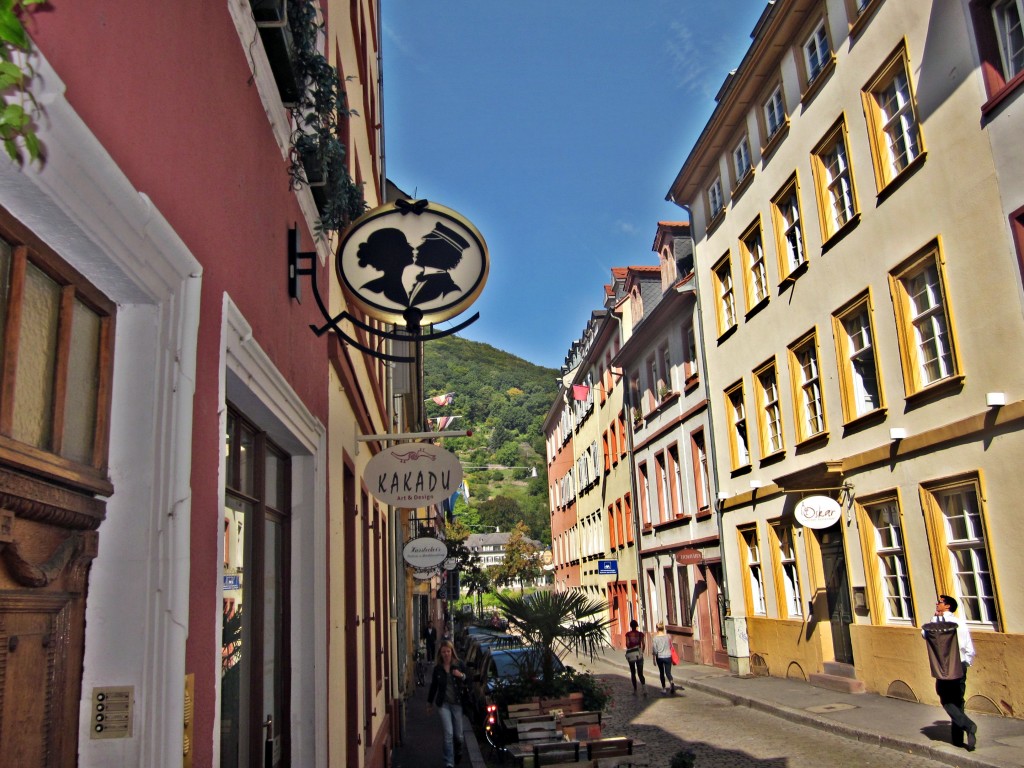 Anja, our Program Manager was bemoaning the fact that her boyfriend had not yet “popped the question” so we gave her one to give to him to kind of coax him a bit. We saw her eating it later on. So much for a coax.
Anja, our Program Manager was bemoaning the fact that her boyfriend had not yet “popped the question” so we gave her one to give to him to kind of coax him a bit. We saw her eating it later on. So much for a coax.
Here’s Archie disguised as a street beggar. C’mon Archie, I’d know you anywhere.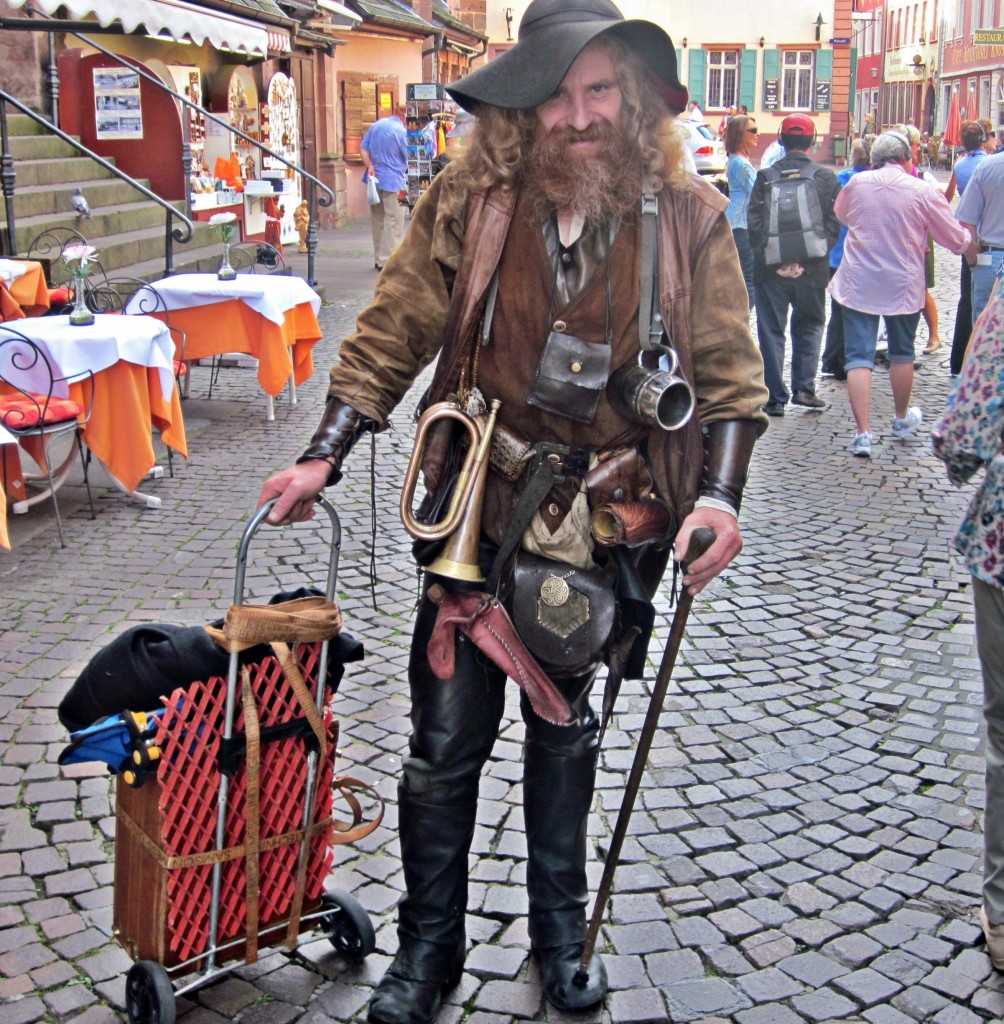
Here is a view, from downtown of the Heidelberg Castle.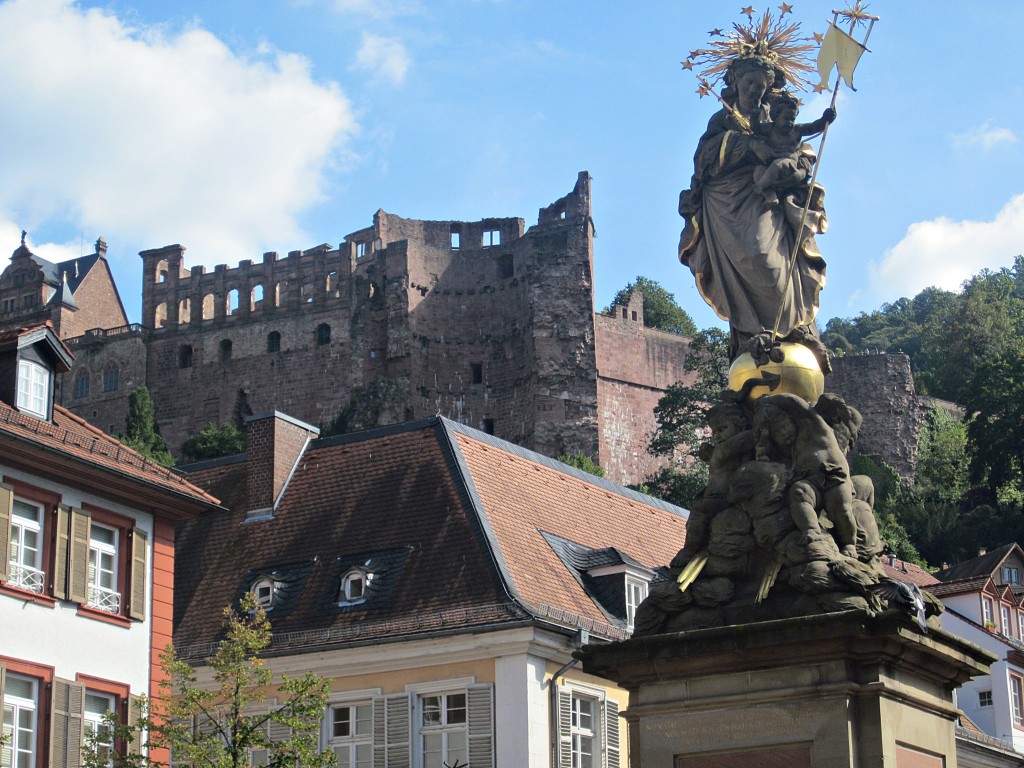 Created by Peter von den Branden in 1718, the Corn Market Madonna is considered the most beautiful baroque statue in Heidelberg.
Created by Peter von den Branden in 1718, the Corn Market Madonna is considered the most beautiful baroque statue in Heidelberg.
This is the funicular that take people from downtown up to the Heidelberg Castle. It’s about a one minute ride.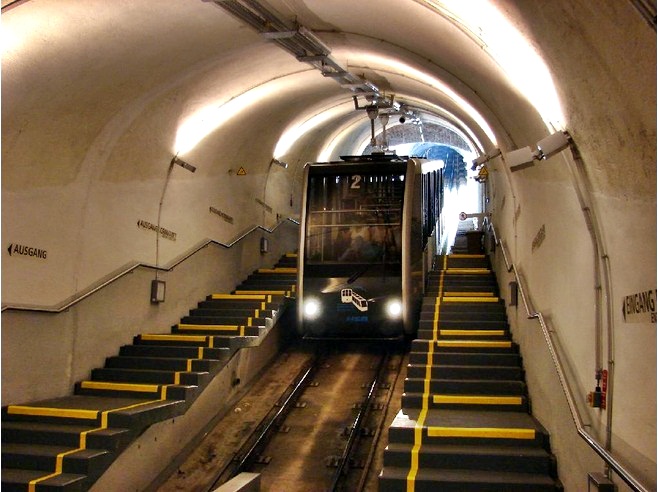
Here is a post card view of the Castle as it appears today. It looks OK, but it is actually a partially restored ruins. Notice the missing roofs and windows.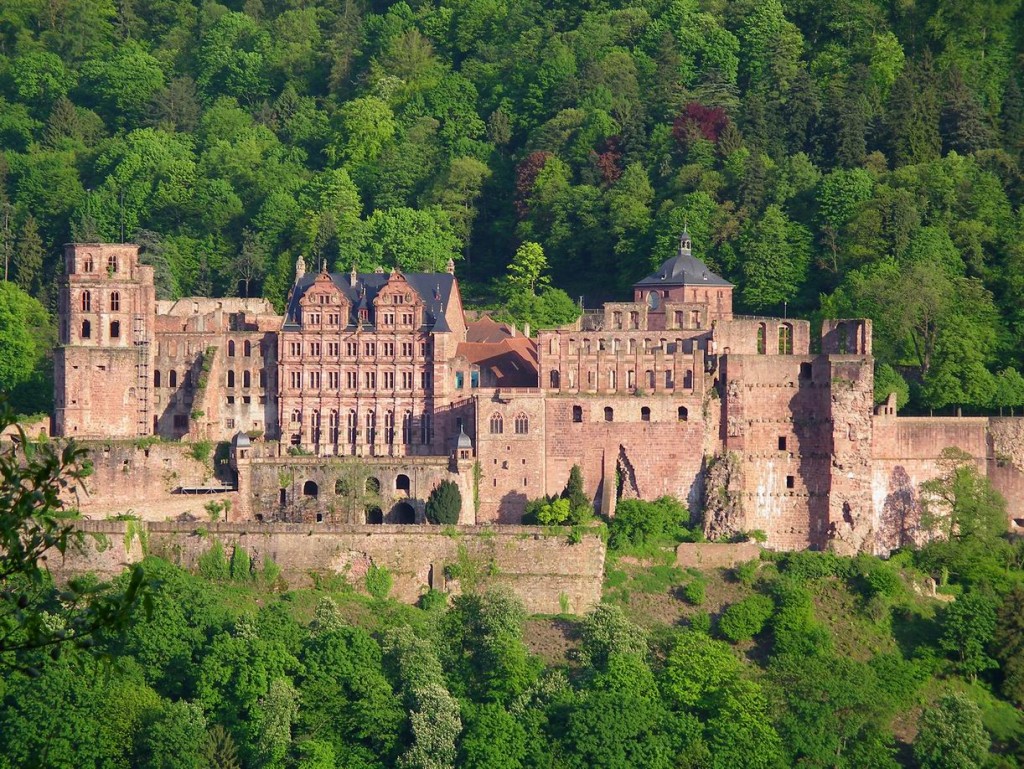
Here is a shot of the courtyard of the castle. The building straight ahead is partially restored, but is not open to the public.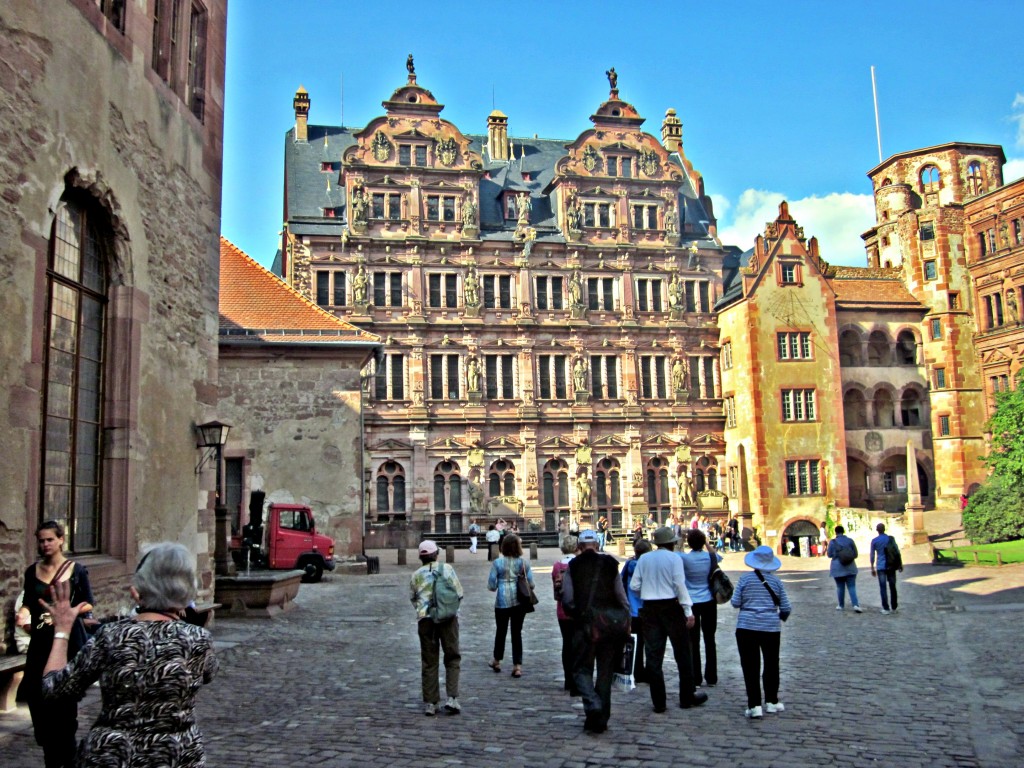 The castle was erected on a medieval fortress complex high above Heidelberg. For five centuries, the powerful Prince Electors of the Palatinate region, members of the House of Wittelsbach, resided here. In 1693, during the War of Palatinate Succession, the castle with its towers was destroyed. The magnificent ruins became the symbol of an entire epoch, the German Romantic period. Today during the annual summer Castle Festivals the castle is an enchanting stage setting for numerous open-air performances.
The castle was erected on a medieval fortress complex high above Heidelberg. For five centuries, the powerful Prince Electors of the Palatinate region, members of the House of Wittelsbach, resided here. In 1693, during the War of Palatinate Succession, the castle with its towers was destroyed. The magnificent ruins became the symbol of an entire epoch, the German Romantic period. Today during the annual summer Castle Festivals the castle is an enchanting stage setting for numerous open-air performances.
This is the famous Heidelburg Wine Vat.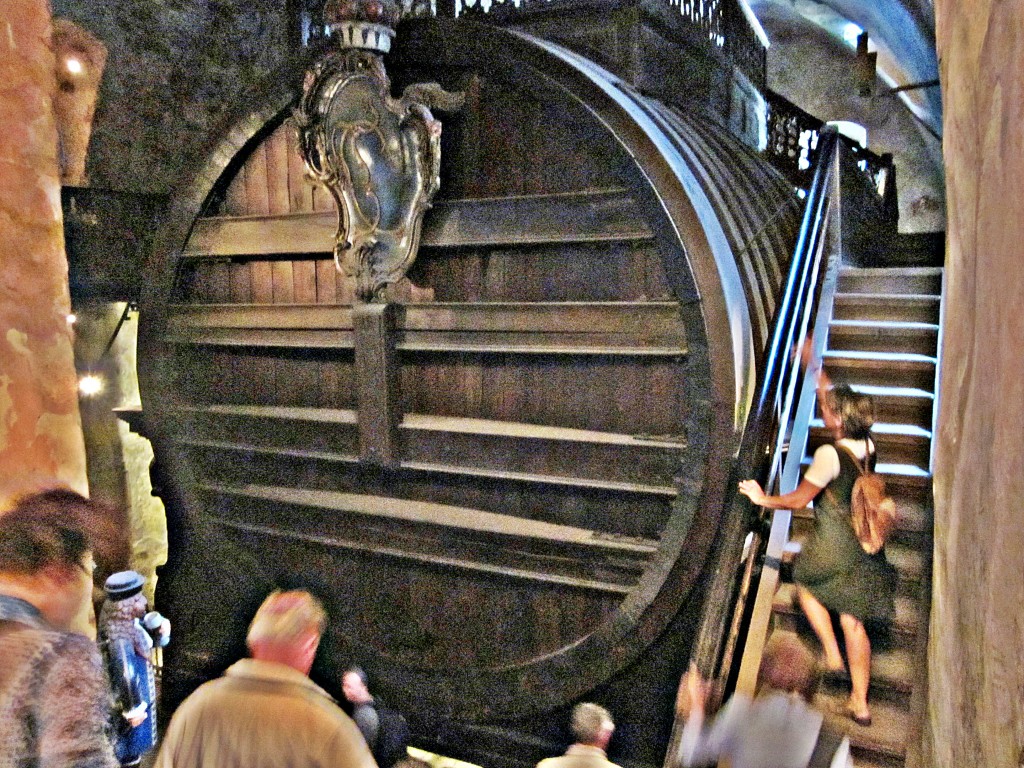 Deep in the dim bowels of Heidelberg Castle is the world’s largest wine barrel. The Heidelberg Tun or Grosses Fass holds over 58,000 US gallons and stands an impressive 18 feet high. To encourage partying, a staircase leads to a dance floor installed on its top so people could drink and dance all evening! Wow!!
Deep in the dim bowels of Heidelberg Castle is the world’s largest wine barrel. The Heidelberg Tun or Grosses Fass holds over 58,000 US gallons and stands an impressive 18 feet high. To encourage partying, a staircase leads to a dance floor installed on its top so people could drink and dance all evening! Wow!!
Here are two views from the castle of the town with the “Holy Ghost” cathedral and the “Old Bridge”.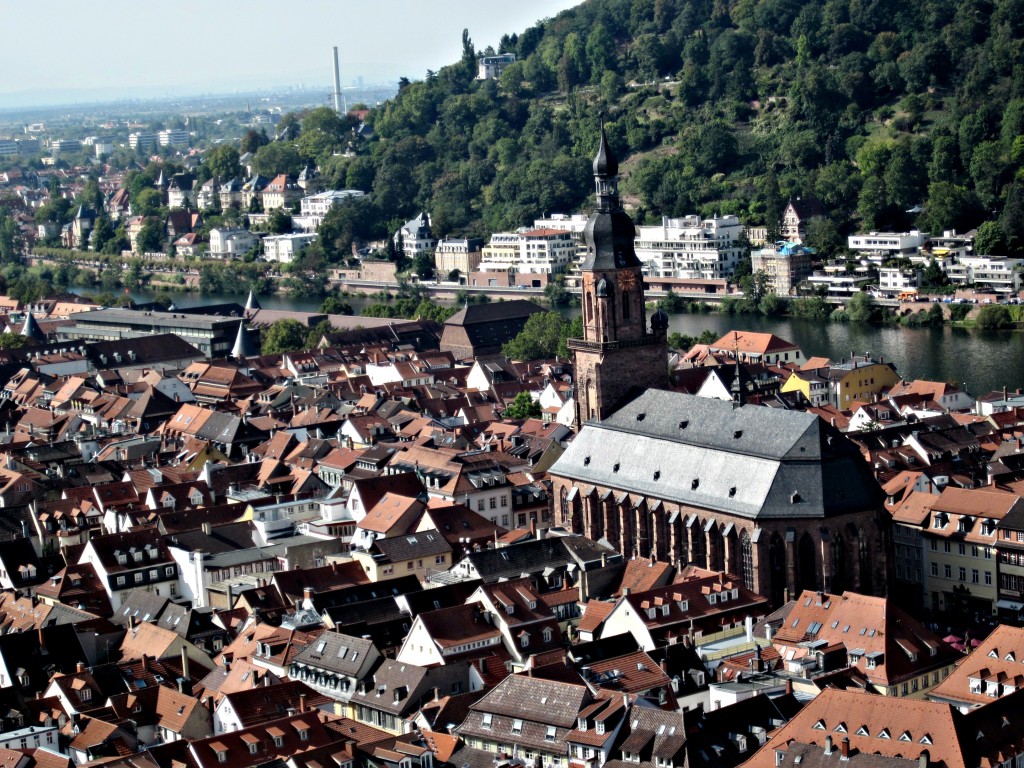
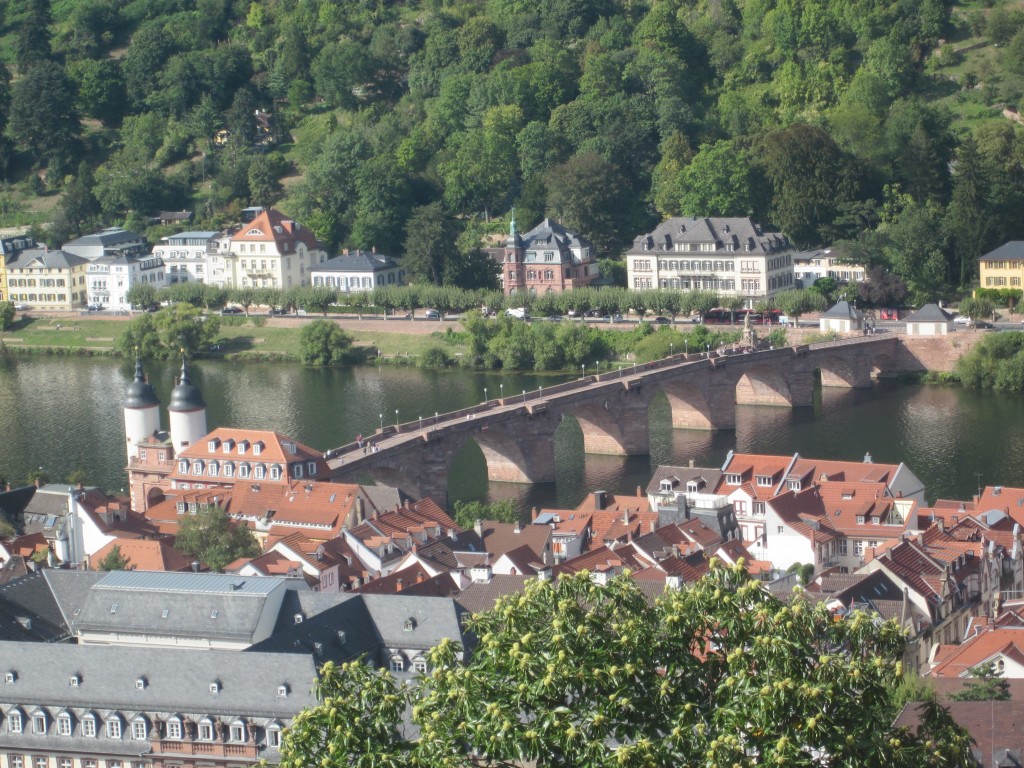 The Old Bridge is actually relatively young, and was preceded by many older bridges made of wood. The first bridge was recorded at this site in 1284. But like all of the wooden bridges that followed, it eventually fell prey to high water and ice. This finally prompted Prince Elector Carl Theodor to construct the first stone bridge in 1786-88. Raised vents in its middle allowed water to drain off quickly when the river flooded.
The Old Bridge is actually relatively young, and was preceded by many older bridges made of wood. The first bridge was recorded at this site in 1284. But like all of the wooden bridges that followed, it eventually fell prey to high water and ice. This finally prompted Prince Elector Carl Theodor to construct the first stone bridge in 1786-88. Raised vents in its middle allowed water to drain off quickly when the river flooded.
On March 29, 1945, the Wehrmacht left the city after destroying three arches of the old bridge. They also destroyed the more modern bridge downstream. The U.S. Army (3rd Infantry, 7th Army) entered Heidelberg on March 30, 1945. The civilian population surrendered without resistance. The bridge was later reconstructed.
After a busy day sight seeing we reboarded our buses and rode to Speyer where our ship awaited. On the river bank was this neat Beer Garden. 
We didn’t stop in because we would have missed another great dinner of “Sliced Braised Veal Shank with Chopped Parsley, Garlic, and Lemon Zest served on Creamy Polenta and Roasted Root Vegetables“. (Actually, for a change, Mary Ann and I had the Vegetarian alternative: “Eggplant Parmigiana with Tomato and Mozzarella Cheese” It was delicious!)
And so ended Day 10.
During the night our ship sailed to Pittersdorf and Day11 started with a bus ride. We left the ship at Pittersdorf and motored to Baden Baden.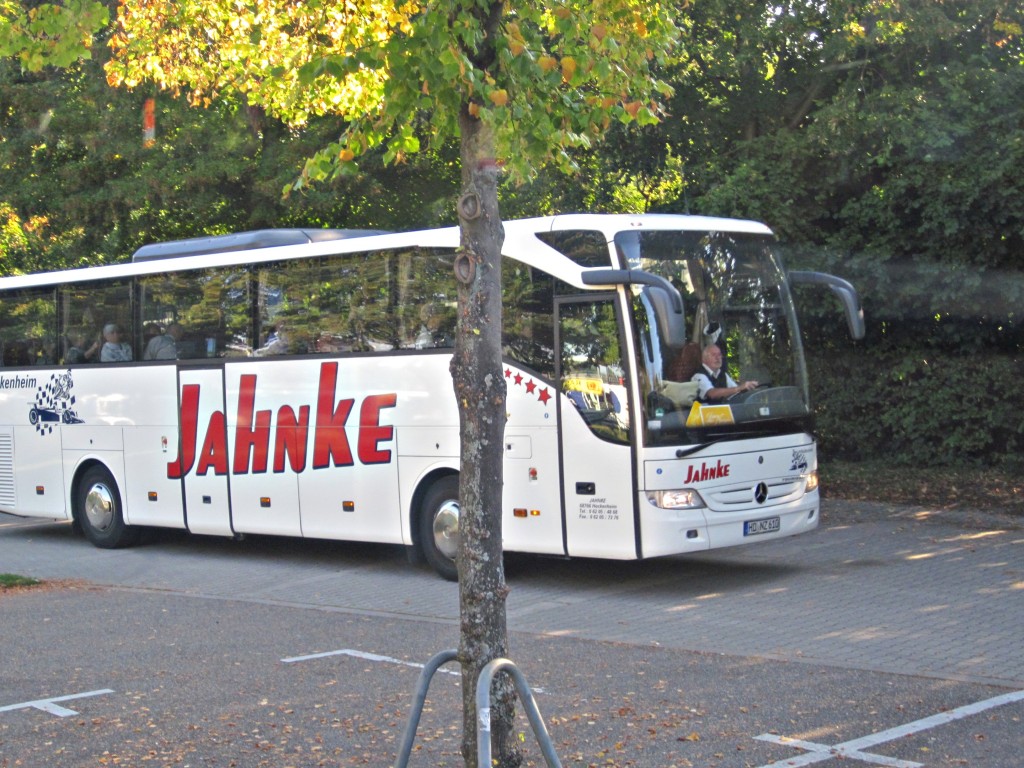 All the buses we used were practically brand new. They we clean and comfortable with large viewing windows. The aisle seat even had a little lever that would move the seat into the aisle a couple of inches to add a bit more butt room. Each color group rode in a separate bus with our own Program Manager who gave interesting talks as we traveled.
All the buses we used were practically brand new. They we clean and comfortable with large viewing windows. The aisle seat even had a little lever that would move the seat into the aisle a couple of inches to add a bit more butt room. Each color group rode in a separate bus with our own Program Manager who gave interesting talks as we traveled.
We arrived at Baden Baden and walked through town to the Casino.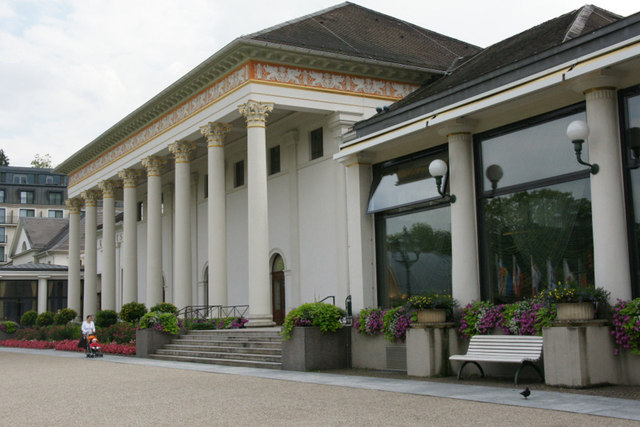
I was a bit disappointed. I thought it would be big and glitzy with limos cruising around, like Las Vegas. It wasn’t. The outside is rather plain. It’s the inside that is fancy. We toured the Casino in the morning, when it was not functioning. Maybe there are limos in the evening?
The opulent Baden-Baden Casino was opened in 1838 and is reminiscent of the 19th century or a 1970s James Bond film, depending on your proclivities. Its décor, which seeks to emulate – indeed, outdo – the splendor of France’s famed Versailles, led Marlene Dietrich to call it ‘the most beautiful casino in the world’. After observing the action here, Dostoevsky was inspired to write The Gambler.
You need your passport or European national ID card to enter when the Casino is operating, and cell phones must be switched off. Games include French and American roulette, blackjack and poker (Friday and Saturday only). Minimum stakes range from around €2 to around €50. You do not have to gamble but men must wear a jacket and tie. The rules for women are more relaxed but nothing too sporty (for example shorts) is permitted. But the times they are a-changin, even here: jeans, so long as they are neat, clean and without holes, are now permitted for both sexes. However, sports shoes remain forbidden.
One of the Roulette rooms looked like this: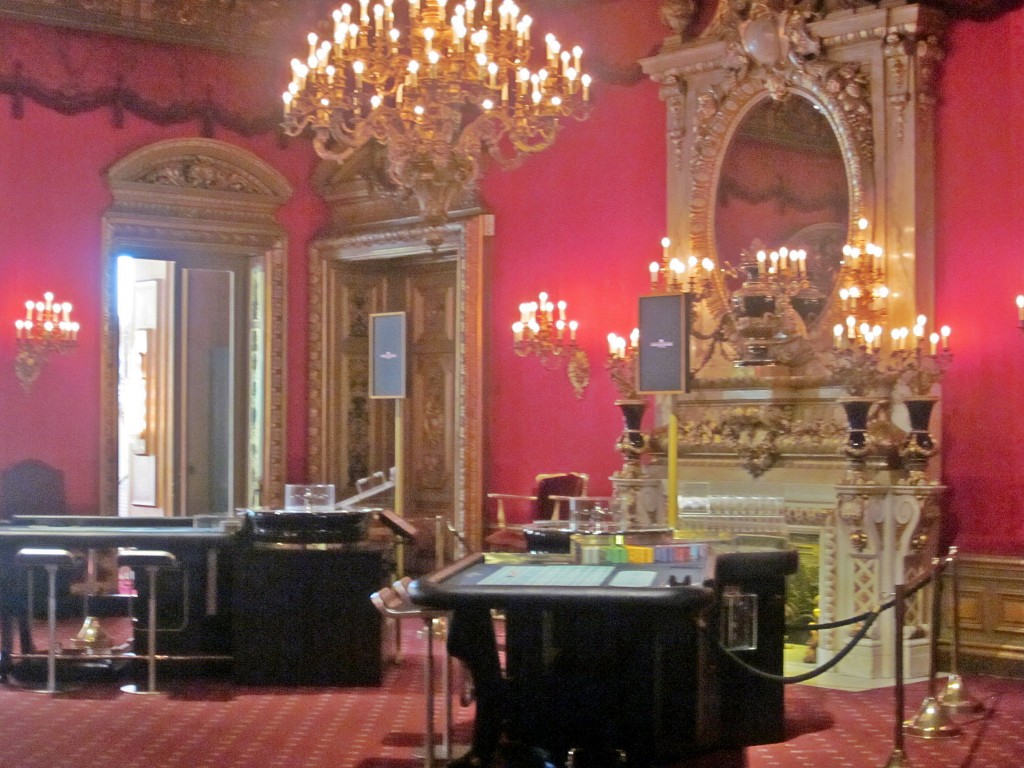
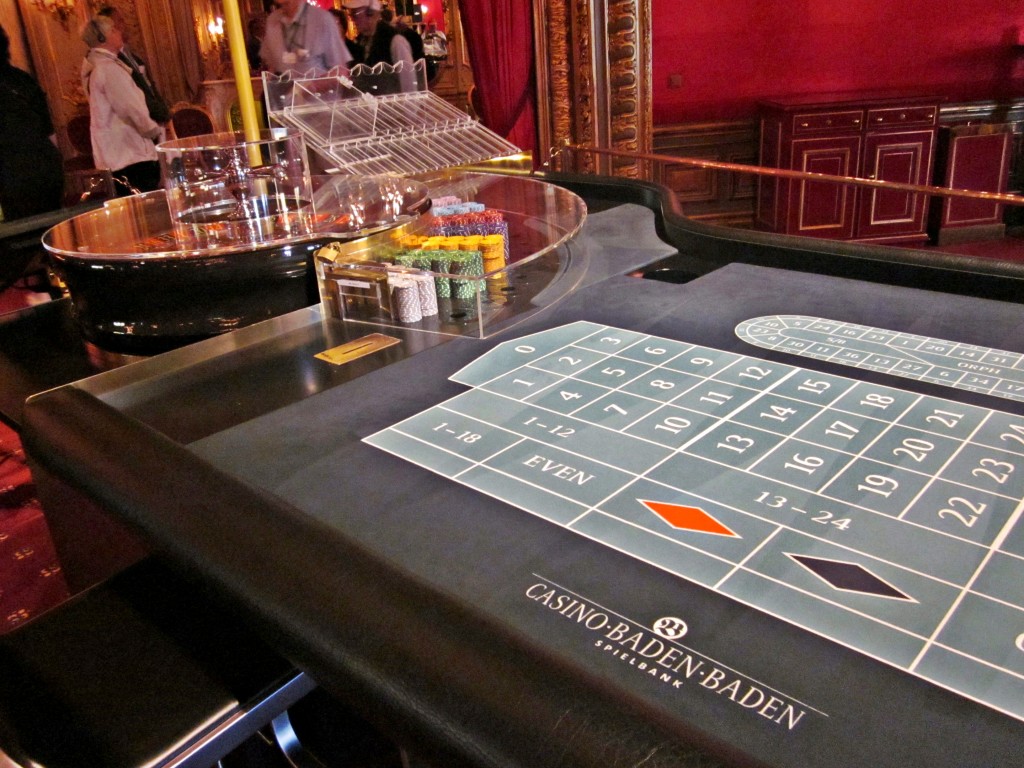
One of the Hallways looked like this:
I thought this mirror reflected good taste.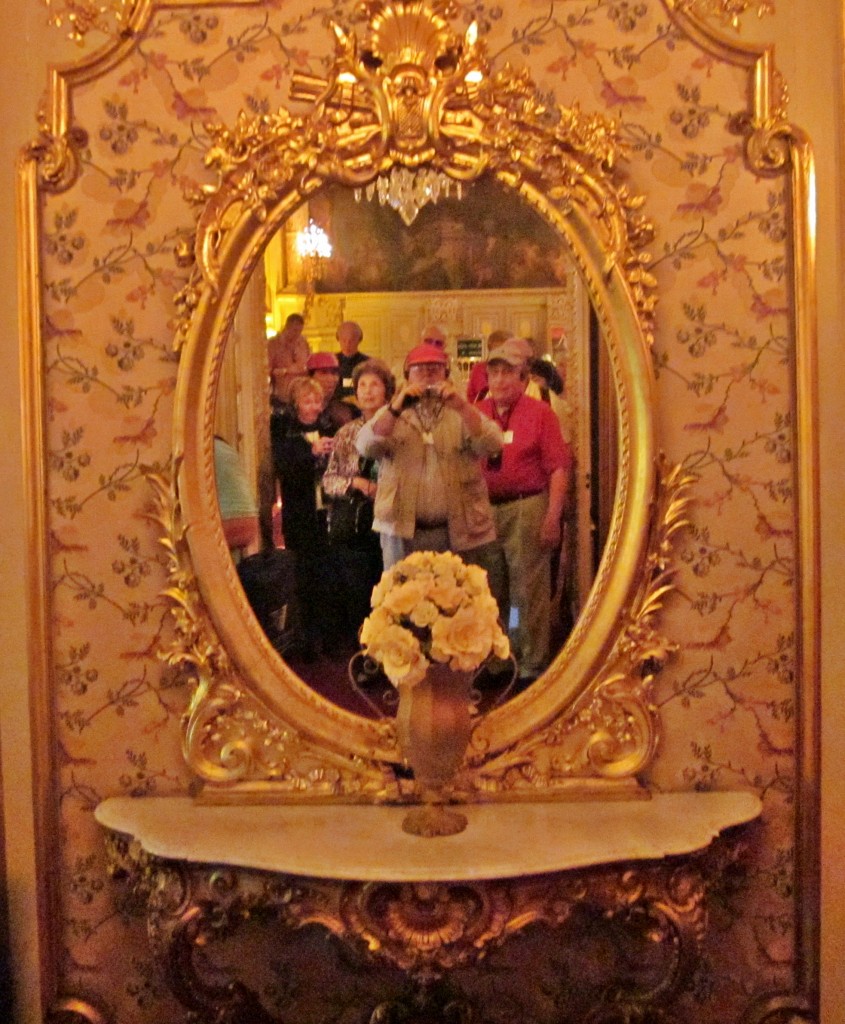
We left the Casino and went next door to the Trinkhalle (Pump House).
This was a place to enjoy a snack and/or a glass of warm, sulphurous mineral water flowing from this fountain. It didn’t taste so good. It reminded me of the mineral water from Saratoga Springs in New York State.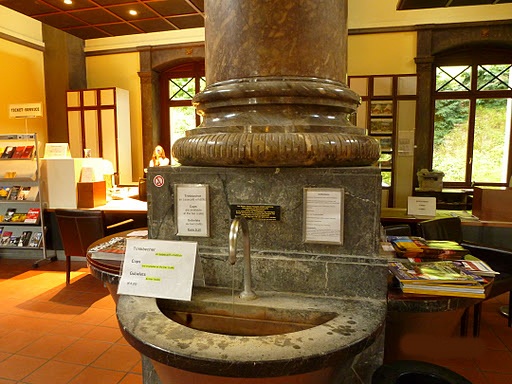
We left the Casino area and went to downtown Baden Baden. One street was the Rodeo Drive of Baden Baden complete with a red carpet. You obviously needed money to shop here.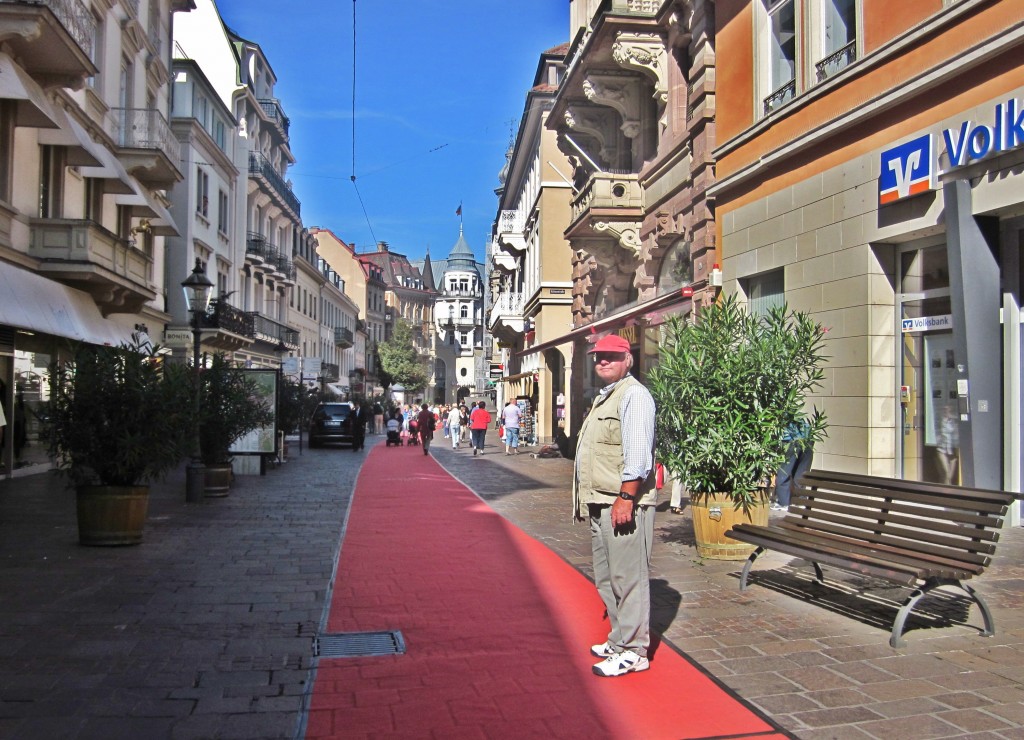
We didn’t buy anything in Baden Baden but we did give a few euro to these “Tuna” singers from Salamanca University in Spain.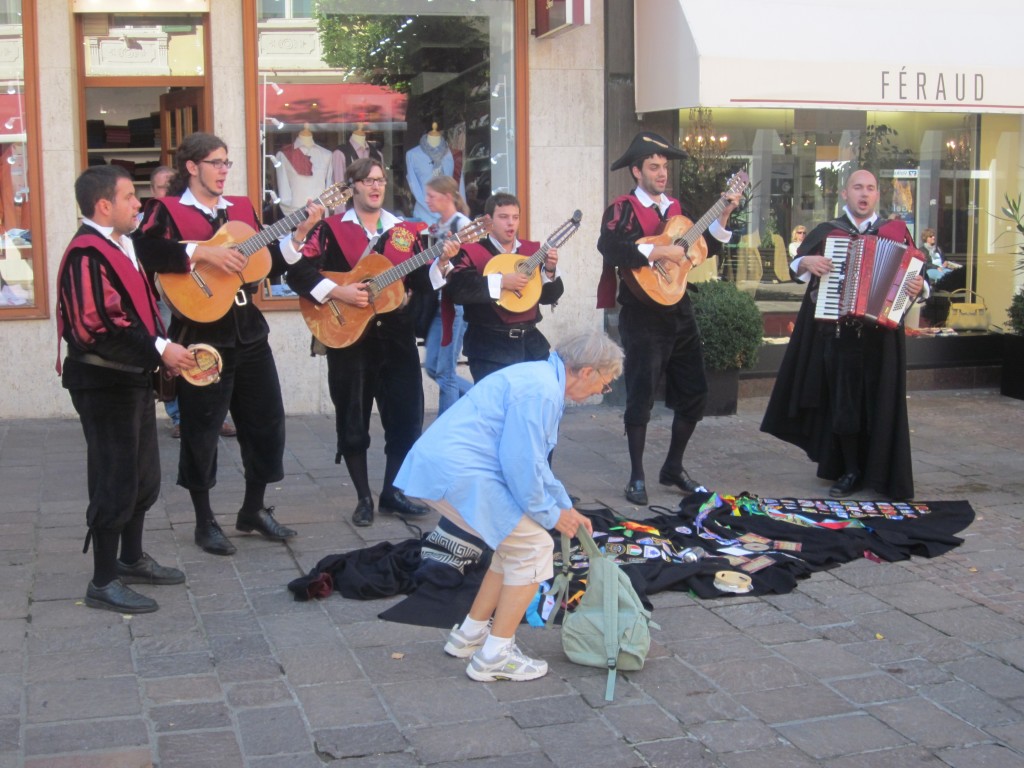 A tuna is a group of university students in traditional dress who play guitar and sing serenades. The tradition originated in Spain and Portugal in the 13th century as a means of students to earn money or food. A member of a tuna is known as a tuno or sopista. (The sopistas were poor students, who made the most of their musical talent, cheerfulness and japing to stroll through the towns, visiting streets, squares and convents and entertaining people in return for a bowl of soup and a few coins to help them pay for their studies.)
A tuna is a group of university students in traditional dress who play guitar and sing serenades. The tradition originated in Spain and Portugal in the 13th century as a means of students to earn money or food. A member of a tuna is known as a tuno or sopista. (The sopistas were poor students, who made the most of their musical talent, cheerfulness and japing to stroll through the towns, visiting streets, squares and convents and entertaining people in return for a bowl of soup and a few coins to help them pay for their studies.)
We were familiar with Tuna Singers from our days living as “Winter Texans” along the Rio Grande. A group from San Luis Potosí University would perform at the “Border Fest” in McAllen, TX each year. I actually have one of their CDs.
We had seen enough of Baden Baden (notice that we did not visit a Cathedral) so we went to Leopold’s Square to await our Orange Group for the walk back to the bus,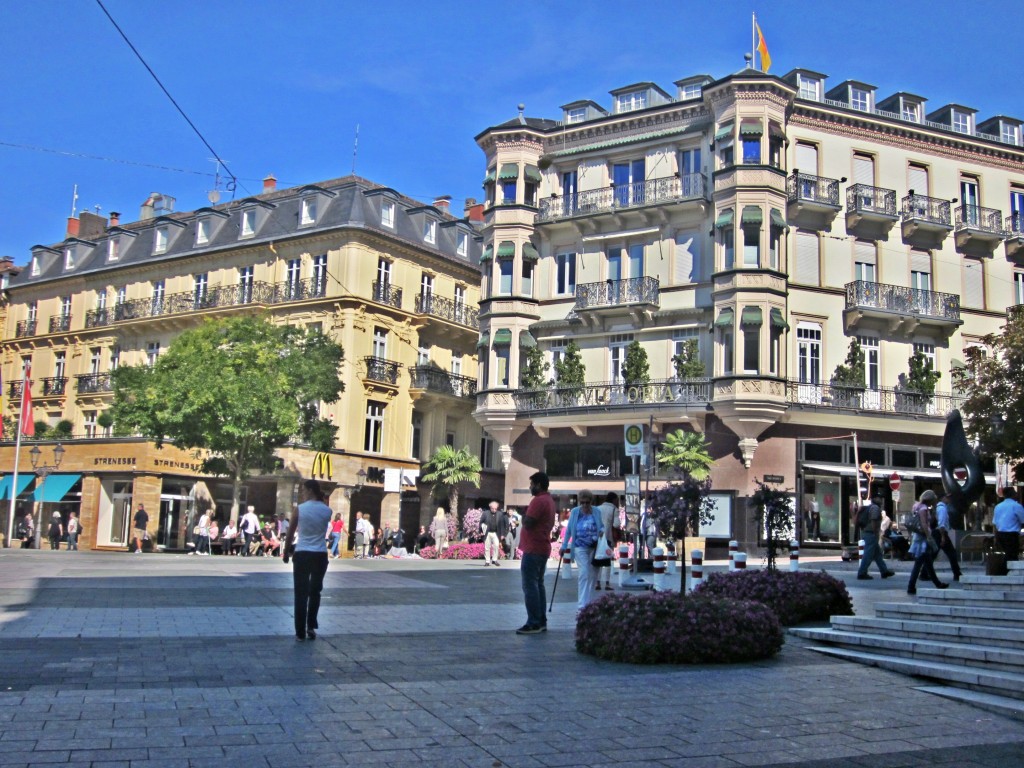 Note the “Golden Arches” on the lower floor of the building on the left.
Note the “Golden Arches” on the lower floor of the building on the left.
We returned to the ship in time for lunch and a departure for Strasbourg, France. While underway, we had a chance to see the ship’s galley (kitchen). Head Chef Robert showed us around.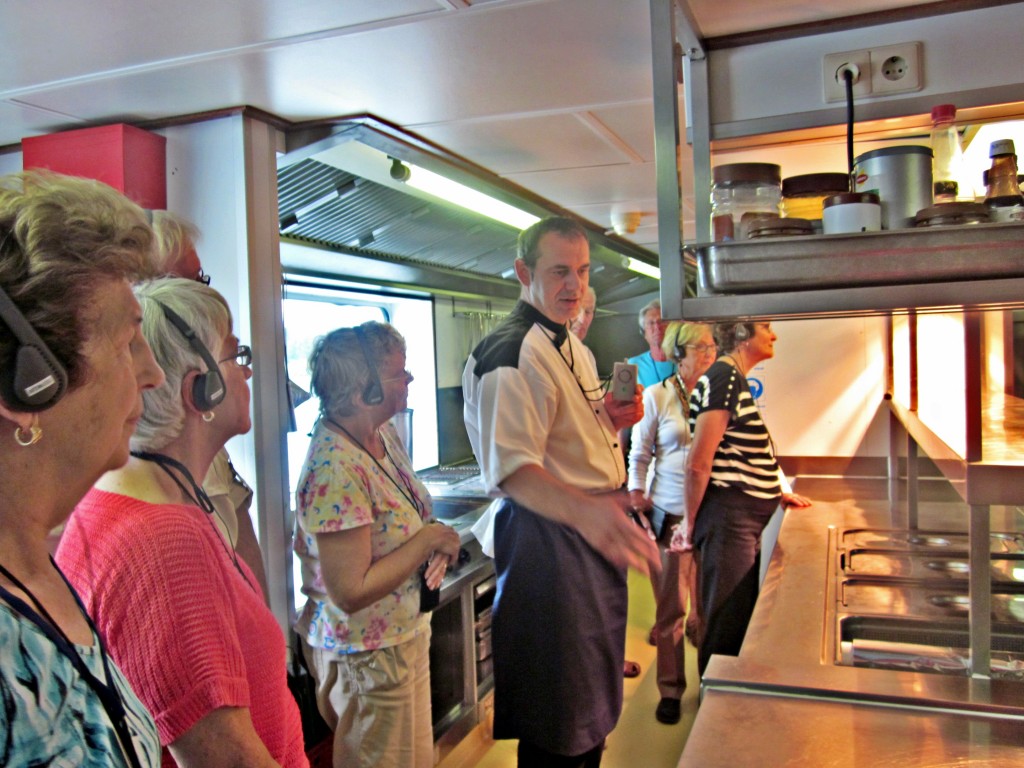 The galley was rather small, but efficiently laid out. His team all had specific stations: salads, bakery, meats, fish, scullery, etc. They would prepare a 5 course meals for over 130 people 3 times a day. It must be quite a sight when they are all working together at mealtime!
The galley was rather small, but efficiently laid out. His team all had specific stations: salads, bakery, meats, fish, scullery, etc. They would prepare a 5 course meals for over 130 people 3 times a day. It must be quite a sight when they are all working together at mealtime!
That evening our entree was ” Pink Roasted Sirloin of Beef with Shallot-Red Wine Sauce, Sauteed French Beans with Bacon and Maceira Potatoes“. Another winner!
For dessert we had a choice of “Chocolate Mousse with Marinated Blackberry and Brandy Sauce” or …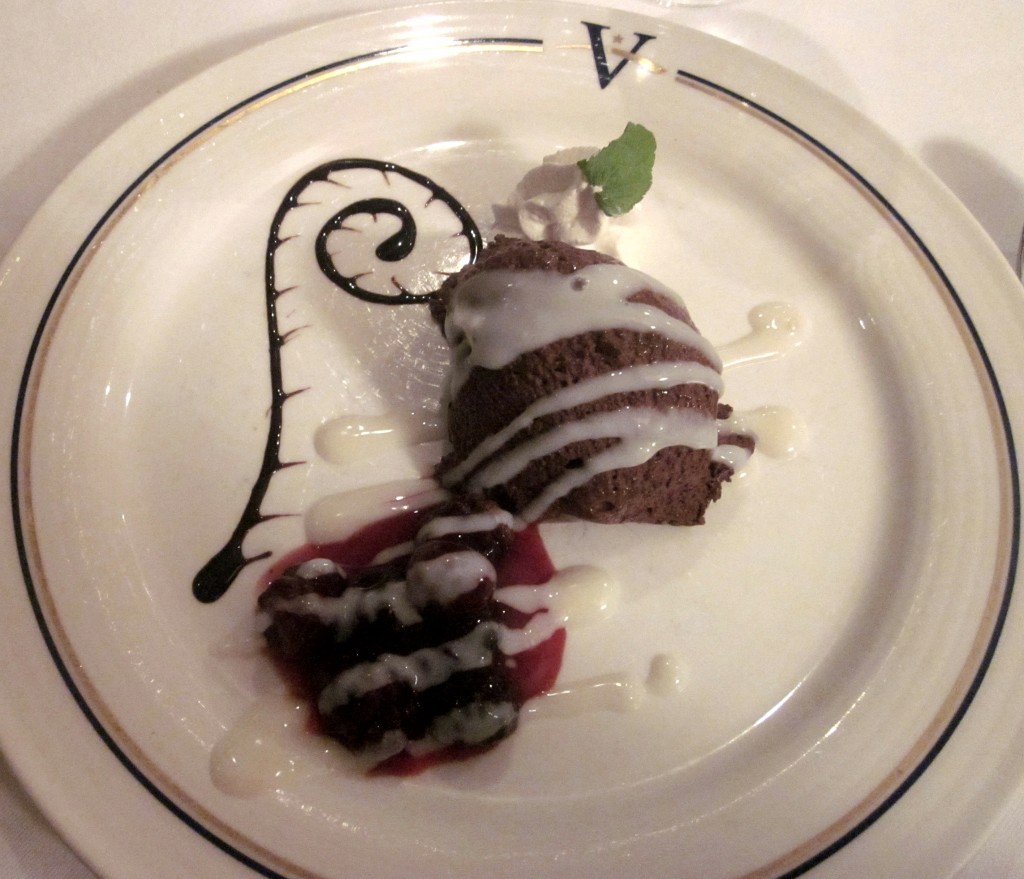
…a “Fresh Fruit Plate“. Mary Ann usually had the fruit. She didn.t gain a pound on the cruise.
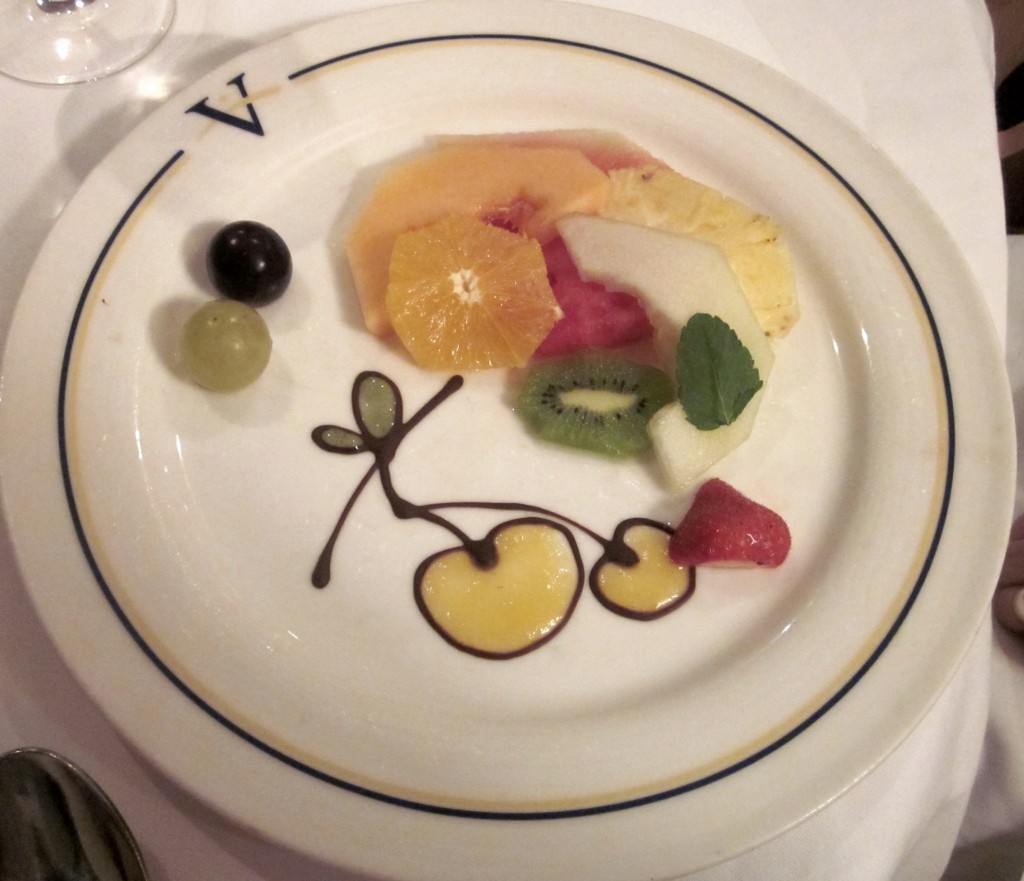 Note the artwork on the plates. This was a Chef Richard specialty.
Note the artwork on the plates. This was a Chef Richard specialty.
This evenings entertainment was “Armand and Chanson” a French duet.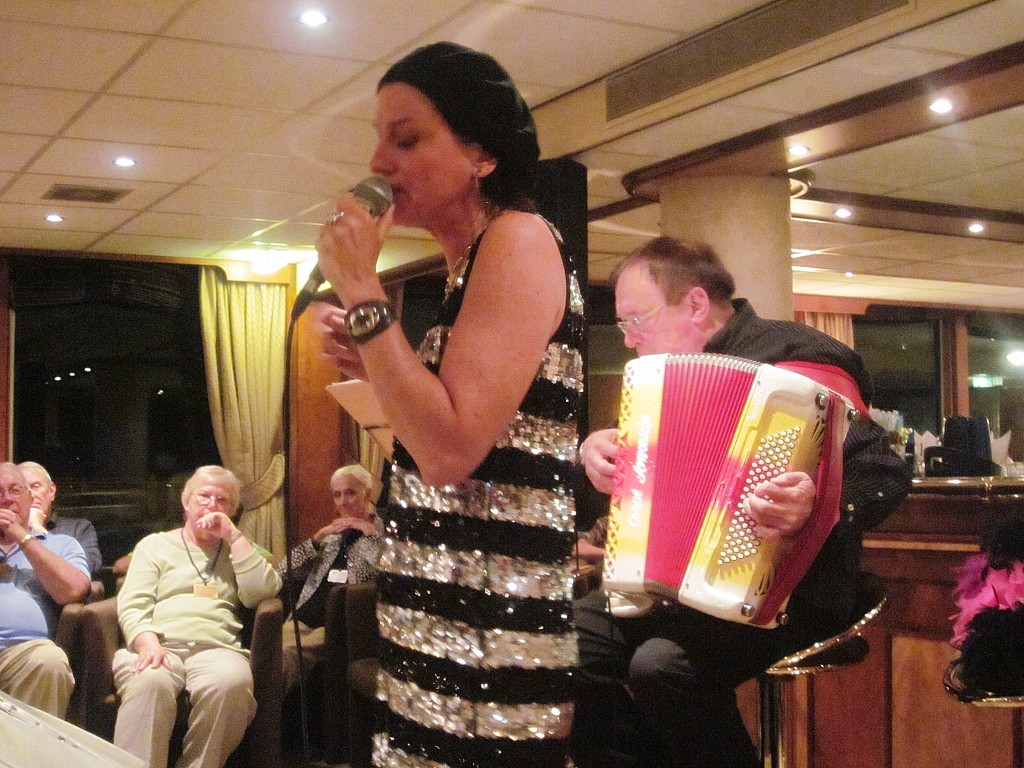 She sang like Edith Piaf and he accompanied on the accordion complete with facial expressions like Quasimodo. She had a good voice and he was a comical (but excellent) accordionist.
She sang like Edith Piaf and he accompanied on the accordion complete with facial expressions like Quasimodo. She had a good voice and he was a comical (but excellent) accordionist.
We hit the hay and ended our 11th Day. Just 3 days left on this fantastic trip.
